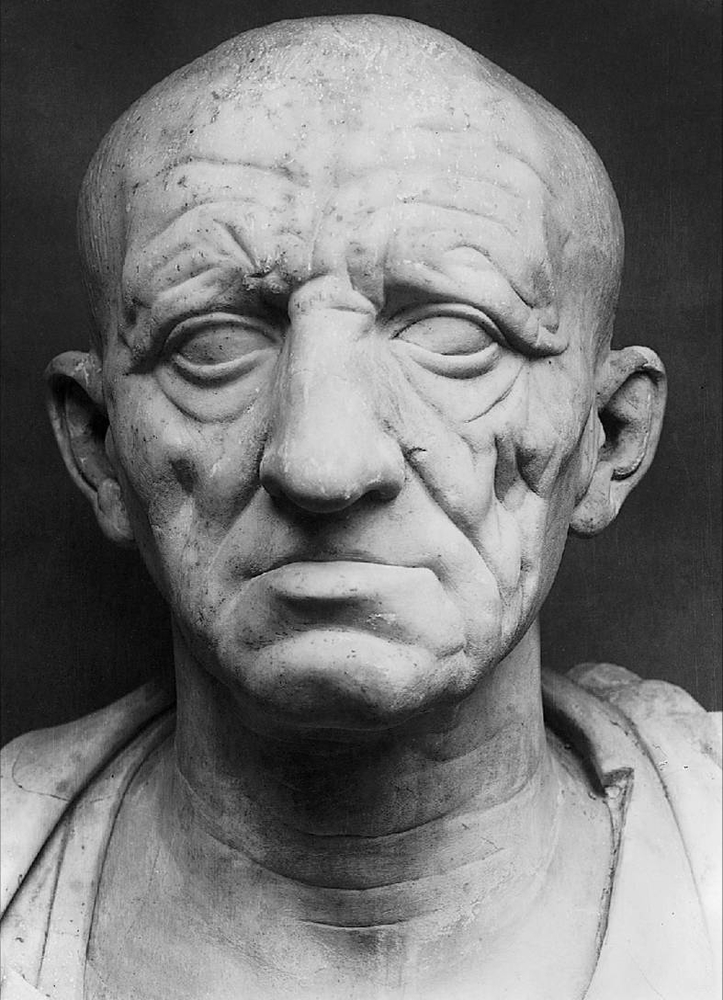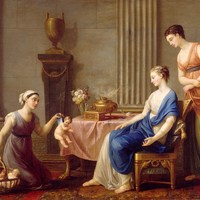More about Antonio Canova
Works by Antonio Canova

Sr. Contributor
Antonio Canova started out as a butter face pauper and ended up 'The Supreme Minister of Beauty.'
Antonio's life started out a little sad, for real. His father dies when he's an infant and he's sent to live with his destitute stonecutter of a grandfather. But, like Obama promised, things got better. One night, young Canova was washing the pots and pans at a big feast, like every poor urchin is wont to do. The feast is held by Faliero, the area's senator and all around big shot. The back of the house gets in a tizzy when everyone realizes there isn't a centerpiece for the table. Canova steps up and asks for all the butter they can muster. That request accommodated, he sculpts the giant butter lion to end all giant butter lions. The senator gets a load of that lion and turns his feast into a party in honor of the dishwasher.
Not wanting such talent to go to waste, Faliero sets young Antonio up with Bernardi, a grade A teacher. When Antonio's strikes out on his own, Faliero sets him up with some sweet nepotism money from the Senate's coffers and arranges it so the kid crashes with the Pope's ambassador in Venice. Canova moves on to Rome and lands the best commission a sculptor could hope for: Pope tombs. Designing Papal funerary digs spread his name around the Eternal City by putting him all over guidebooks. In no time, anyone talking about fine art on the Continent was talking about Antonio Canova.
What drove everyone bonkers for Canova was his take on that classical Greek vibe. Vacant heroic looks off into the distance, white marble, nudes, that kind of thing. Napoleon came calling for Canova's hand in sculpture, and got the cold shoulder. That is, until Bonaparte convinced his good buddy the Pope to have a chat with Canova. On the Pope's insistence, the Venetian moved to Paris and became Napoleon's official court sculptor. A primary job duty was doing nudes of Napoleon and his family (separately, not like an #awkwardfamilyportrait).
Eventually, the world cooled to Canova's vision of art. He's plenty appreciated now, but his reputation soured in the decades after death. Dropping him from the 'Supreme Minister of Beauty' to a nobody. Still, Antonio had a huge fanbase in his own lifetime. Canova designed a monument to Titian that was unrealized by the time the sculptor died. Instead of going through with the whole Titian idea, Canova's students and acolytes kissed his butt all the way to the afterlife by using the design as a tribute to their deceased, butter loving idol.

Contributor
Born November 1, 1757 - Died October 13, 1822
Orphaned at age 3, raised by grandma and grandpa, who also taught him how to draw, paint and sculpt.
When he was 13, a visiting senator who noticed a lion Canova had carved into a stick of butter. The senator saw to it that Canova received the best training available and became his patron for life.
Canova believed in hard work. He once made a resolution to create a new design every single day, and he kept that resolution for several years.
His doctors concluded that hard work may have taken its toll, because after his death their autopsy revealed that 1) he died from stomach cancer, and 2) the right side of his chest was indented from constantly leaning on the head of a "trapano" (sort of a heavy chisel like tool). Of course that diagnosis was made in 1822, and it seems a bit unlikely that a deformed chest and stomach cancer are necessarily related, but "he died from excessive devotion to his art" certainly sounds more romantic than "stomach cancer".
Canova was buried in two pieces: his body went to his home town of Possagno, but his heart was laid to rest in a marble pyramid in the church of Santa Maria Gloriosa dei Frari in Venice.
Featured Content
Here is what Wikipedia says about Antonio Canova
Antonio Canova (
Italian pronunciation: [anˈtɔːnjo kaˈnɔːva]; 1 November 1757 – 13 October 1822) was an Italian Neoclassical sculptor, famous for his marble sculptures. Often regarded as the greatest of the Neoclassical artists, his sculpture was inspired by the Baroque and the classical revival, and has been characterised as having avoided the melodramatics of the former, and the cold artificiality of the latter.
Check out the full Wikipedia article about Antonio Canova


















